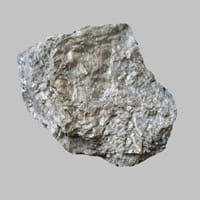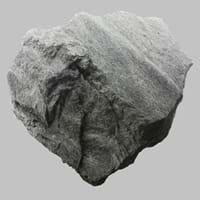Definition
Whiteschist is an uncommon rock type belonging to a class of metamorphic rock, this is formed at high-ultra-high pressures
Phyllite is a fine-grained metamorphic rock with a well-developed laminar structure, and is intermediate between slate and schist rocks
Discoverer
Unknown
Unknown
Etymology
From French schiste, Greek skhistos i.e. split
From Greek phullon leaf + -ite1
Class
Metamorphic Rocks
Metamorphic Rocks
Sub-Class
Durable Rock, Soft Rock
Durable Rock, Soft Rock
Group
Not Applicable
Not Applicable
Other Categories
Fine Grained Rock, Medium Grained Rock, Opaque Rock
Coarse Grained Rock, Fine Grained Rock, Medium Grained Rock, Opaque Rock
Texture
Foliated
Phyllitic Sheen, Slaty
Color
Colourless, Green, Grey, White
Black to Grey, Light Greenish Grey
Durability
Durable
Durable
Appearance
Banded and Foilated
Crinkled or Wavy
Interior Uses
Decorative Aggregates, Interior Decoration
Decorative Aggregates, Floor Tiles, Homes, Interior Decoration
Exterior Uses
Garden Decoration, Paving Stone
As Building Stone, As Facing Stone, Garden Decoration
Other Architectural Uses
Curbing
Curbing
Construction Industry
for Road Aggregate
As Dimension Stone, Building houses or walls, Cement Manufacture, Construction Aggregate, for Road Aggregate, Raw material for the manufacture of mortar, Roadstone
Medical Industry
Not Yet Used
Not Yet Used
Antiquity Uses
Artifacts, Monuments, Sculpture, Small Figurines
Artifacts, Sculpture
Commercial Uses
Creating Artwork, Gemstone, Jewelry, Production of Lime
Cemetery Markers, Commemorative Tablets, Creating Artwork, Writing Slates
Types
Not Available
Not Available
Features
High percentage of mica, Host Rock for Lead
Easily splits into thin plates, Is one of the oldest rock, Surfaces are often shiny
Archaeological Significance
Monuments
Used
Not Yet Used
Famous Monuments
Data Not Available
Not Applicable
Famous Sculptures
Data Not Available
Data Not Available
Formation
Whiteschist is formed by dynamic metamorphism at high temperatures and pressures that aligns the grains of mica, hornblende and other elongated minerals into thin layers.
Phyllite is a metamorphic rock which is formed by regional metamorphism of argillaceous sediments since their cleavage arose due to deviatoric stress.
Mineral Content
Carbonate, Coesite, Quartz, Silica
Albite, Alusite, Amphibole, Apatite, Biotite, Chlorite, Epidote, Feldspar, Garnet, Graphite, Hornblade, Kyanite, Micas, Muscovite or Illite, Porphyroblasts, Quartz, Sillimanite, Staurolite, Talc, Zircon
Compound Content
CaO, Mg, MgO, Silicon Dioxide
CaO, Carbon Dioxide, MgO
Types of Metamorphism
Not Applicable
Not Applicable
Types of Weathering
Biological Weathering, Chemical Weathering, Mechanical Weathering
Biological Weathering, Chemical Weathering, Mechanical Weathering
Types of Erosion
Chemical Erosion, Coastal Erosion, Glacier Erosion
Chemical Erosion, Coastal Erosion, Glacier Erosion, Water Erosion, Wind Erosion
Grain Size
Fine to Medium Grained
Medium to Fine Coarse Grained
Fracture
Conchoidal
Conchoidal
Porosity
Less Porous
Highly Porous
Luster
Subvitreous to Dull
Phyllitic
Compressive Strength
Not Available
Cleavage
Perfect
Crenulation and Pervasive
Specific Gravity
2.86
2.72-2.73
Transparency
Opaque
Opaque
Density
2.8-2.9 g/cm3
2.18-3.3 g/cm3
Specific Heat Capacity
Not Available
Resistance
Heat Resistant
Heat Resistant, Pressure Resistant, Water Resistant
Deposits in Eastern Continents
Asia
Afghanistan, Bangladesh, Bhutan, China, India, Japan, Kazakhstan, Malaysia, Pakistan, Russia, Thailand, Turkey, Vietnam
Afghanistan, Bangladesh, Bhutan, China, India, Japan, Kazakhstan, Malaysia, Pakistan, Russia, Thailand, Turkey, Vietnam
Africa
Egypt, Ethiopia, Morocco, Nigeria, South Africa
Egypt, Ethiopia, Morocco, Nigeria, South Africa
Europe
Austria, England, France, Georgia, Germany, Italy, Liechtenstein, Monaco, Norway, Slovenia, Spain, Sweden, Switzerland
Austria, England, France, Georgia, Germany, Italy, Liechtenstein, Monaco, Norway, Slovenia, Spain, Sweden, Switzerland
Others
Not Yet Found
Not Yet Found
Deposits in Western Continents
North America
Canada, Costa Rica, Cuba, Mexico, Panama, USA
Canada, Costa Rica, Cuba, Mexico, Panama, USA
South America
Brazil, Colombia, Guyana
Brazil, Colombia, Guyana
Deposits in Oceania Continent
Australia
New South Wales, New Zealand, Queensland
New South Wales, New Zealand, Queensland
Whiteschist vs Phyllite Characteristics
Though some rocks look identical, they have certain characteristics which distinguish them from others. Characteristics of rocks include texture, appearance, color, fracture, streak, hardness etc. Whiteschist vs Phyllite characteristics assist us to distinguish and recognize rocks. Also you can check about Properties of Whiteschist and Properties of Phyllite. Learn more about Whiteschist vs Phyllite in the next section. The interior uses of Whiteschist include Decorative aggregates and Interior decoration whereas the interior uses of Phyllite include Decorative aggregates, Floor tiles, Homes and Interior decoration. Due to some exceptional properties of Whiteschist and Phyllite, they have various applications in construction industry. The uses of Whiteschist in construction industry include For road aggregate and that of Phyllite include As dimension stone, Building houses or walls, Cement manufacture, Construction aggregate, For road aggregate, Raw material for the manufacture of mortar, Roadstone.
More about Whiteschist and Phyllite
Here you can know more about Whiteschist and Phyllite. The life cycle of a rock consists of formation of rock, composition of rock and transformation of rock. The composition of Whiteschist and Phyllite consists of mineral content and compound content. The mineral content of Whiteschist includes Carbonate, Coesite, Quartz, Silica and mineral content of Phyllite includes Albite, Alusite, Amphibole, Apatite, Biotite, Chlorite, Epidote, Feldspar, Garnet, Graphite, Hornblade, Kyanite, Micas, Muscovite or Illite, Porphyroblasts, Quartz, Sillimanite, Staurolite, Talc, Zircon. You can also check out the list of all . When we have to compare Whiteschist vs Phyllite, the texture, color and appearance plays an important role in determining the type of rock. Whiteschist is available in colourless, green, grey, white colors whereas, Phyllite is available in black to grey, light greenish grey colors. Appearance of Whiteschist is Banded and Foilated and that of Phyllite is Crinkled or Wavy. Properties of rock is another aspect for Whiteschist vs Phyllite. The hardness of Whiteschist is 1.5 and that of Phyllite is 1-2. The types of Whiteschist are Not Available whereas types of Phyllite are Not Available. Streak of rock is the color of powder produced when it is dragged across an unweathered surface. The streak of Whiteschist and Phyllite is white. The specific heat capacity of Whiteschist is 0.92 kJ/Kg K and that of Phyllite is Not Available. Depending on the properties like hardness, toughness, specific heat capacity, porosity etc., rocks are resistant to heat, wear, impact, etc.Whiteschist is heat resistant whereas Phyllite is heat resistant, pressure resistant, water resistant.





